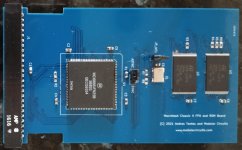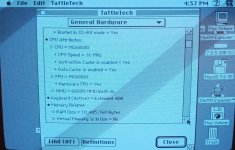andras_tantos
Member
All,
For various reasons I ended up designing a co-processor board for the Classic-II. It seems to be working fine, so I'm wondering if there's any appetite for it in the community and should I order a (small) run of the boards.
I'm not looking to get rich on this project (i.e. I'm sane), so I'm looking at selling them at around the cost of the manufacturing. This is of course somewhat dependent on the volume, but would be on the order of $80-$100 for a 68882-based board and about $30-$50 for a 68881-based version.
I've also tried to get a ROM extension on the same board, but that doesn't seem to be easy: it's of course was simple enough to get the FLASH parts on the board, but the MAC doesn't decode the write bus-transactions to this address range, which means that programming the content would require an external device, which I think is too much expense and is simply not worth it.
At any rate, I would love to hear what anyone has to say about this project and - especially - if they are potentially interested in shelling some money out for such a board. Obviously no commitments, I'm just looking for feedback.
Thanks,
Andras Tantos
For various reasons I ended up designing a co-processor board for the Classic-II. It seems to be working fine, so I'm wondering if there's any appetite for it in the community and should I order a (small) run of the boards.
I'm not looking to get rich on this project (i.e. I'm sane), so I'm looking at selling them at around the cost of the manufacturing. This is of course somewhat dependent on the volume, but would be on the order of $80-$100 for a 68882-based board and about $30-$50 for a 68881-based version.
I've also tried to get a ROM extension on the same board, but that doesn't seem to be easy: it's of course was simple enough to get the FLASH parts on the board, but the MAC doesn't decode the write bus-transactions to this address range, which means that programming the content would require an external device, which I think is too much expense and is simply not worth it.
At any rate, I would love to hear what anyone has to say about this project and - especially - if they are potentially interested in shelling some money out for such a board. Obviously no commitments, I'm just looking for feedback.
Thanks,
Andras Tantos


